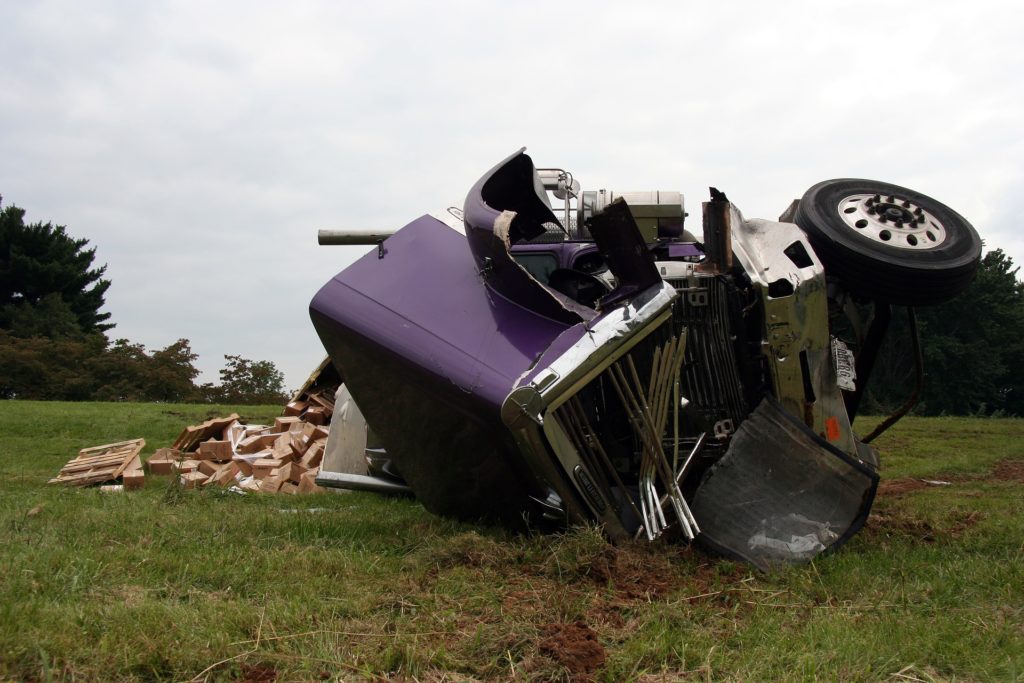Every year, commercial truck accidents claim more than 4,000 lives in the U.S. When semi-truck accidents are fatal, it’s usually the person in a smaller vehicle or on a motorcycle or bicycle who dies. These statistics sadly illustrate the incredible imbalance of size and velocity between a small vehicle (or no vehicle) and a multi-ton truck. Dealing with the aftermath of a fatal semi-truck accident can be devastating. What can family members and other loved ones expect? Learn more about the process of reporting and investigating fatal crashes, as well as what you should do if someone close to you was seriously injured or killed after colliding with a semi-truck.
Reporting the Semi-Truck Accident
Under New York law, anyone who is involved in a traffic accident must remain at the scene to exchange information and wait for the police to arrive. Although leaving the scene of an accident that has only caused property damage is a traffic infraction (on the same level as a speeding ticket), leaving the scene of an accident that has caused injuries or death is a misdemeanor under New York law. Semi truckers who leave the scene of an accident can also have their commercial driver’s license (CDL) revoked.
Those who lawfully remain at the scene after an accident are also obligated to “render aid” to anyone injured. This does not require any specific medical expertise and can often be as simple as calling 911.
The Investigation Process
After a crash, police investigators will begin to gather evidence to create a picture of what caused the accident. Much of this initial investigation includes interviewing those who were in the vehicles involved in the crash, performing field sobriety tests, talking to others who may have witnessed the crash, and taking photos of the scene.
Generally, this preliminary investigation yields a police accident report. Not all police reports include a determination of fault. Potential factors that can contribute to a crash include a vehicle malfunction, inattentiveness, drug or alcohol use, falling asleep at the wheel, slippery or otherwise dangerous road conditions, or inclement weather. Not all such factors are readily apparent—some might only be revealed after a lengthy investigation or even a forensic analysis.
Taking Action to Preserve Your Rights
After a fatal semi-truck accident, an injured person—or the family members of a person killed in the accident—may file a personal injury or wrongful death lawsuit in New York Supreme Court. This type of lawsuit is designed to hold the negligent party legally and financially responsible for the victim’s death. Sometimes, the truck driver’s insurance company (or their employer) will make a settlement offer to the victim’s family to avoid the bad publicity that can come with litigation. In other cases, especially when there is an open question as to who caused or contributed to the crash, it may be necessary to fight this battle in court.
The damages that can be recovered through a wrongful death lawsuit are essentially designed to replace the deceased person’s lost wages, lost future earnings, and other financial and emotional support they would have provided to their spouse, children, or other dependents. Although no amount of money can ever truly compensate for an untimely death, these compensatory damages can at least minimize the surviving family members’ financial suffering. If the person who passed away is a child or unmarried adult with no dependents, his or her parents, siblings, or other relatives can often recover damages for loss of companionship and pain and suffering.
Other compensatory damages that might be available include funds for property damage, medical costs, and burial expenses. Not all types of damages will be awarded in all situations, though; because each case is different, you will need to work with a personal injury attorney to gather the necessary evidence to support your claims.
What You Need to Prove
To recover damages in a wrongful death lawsuit, the plaintiff, on behalf of the deceased person’s estate, will need to prove three elements. These include:
- The defendant(s) owed the victim a duty of care – an obligation to avoid decisions or actions that placed the victim at an unreasonable risk of harm;
- The defendant(s) breached this duty; and
- This breach caused the victim’s death.
Generally, the evidence supporting each of these three points will focus on the defendant’s actions—and the victim’s—leading to the crash. Even if the defendant was partially at fault, he or she may argue that the victim’s actions (such as stopping too quickly or failing to use a turn signal) contributed to the accident. Through a legal principle known as contributory negligence, a victim’s recovery will be reduced by the percentage of fault they bear. If the victim was more than 50 percent at fault for the accident, they may not be able to recover any damages at all.
Once these elements have been established and the defendant is found to be at fault, the only question remaining for the judge (or jury) is how much in damages should be awarded. To support your request, you will present evidence on your loved one’s income, earning capacity, household contributions, and the love and affection they provided to others.
Personal injury and wrongful death claims that involve a fatal semi-truck accident can be complicated. These trucks are bigger, heavier, and deadlier than passenger vehicles, so it is important to choose a wrongful death attorney with significant knowledge in this area of law. From navigating federal and state motor carrier regulations to investigating the root cause of the fatal semi-truck accident, the attorneys at Halperin & Halperin, P.C. have the skills and experience you need to fight for your rights.

